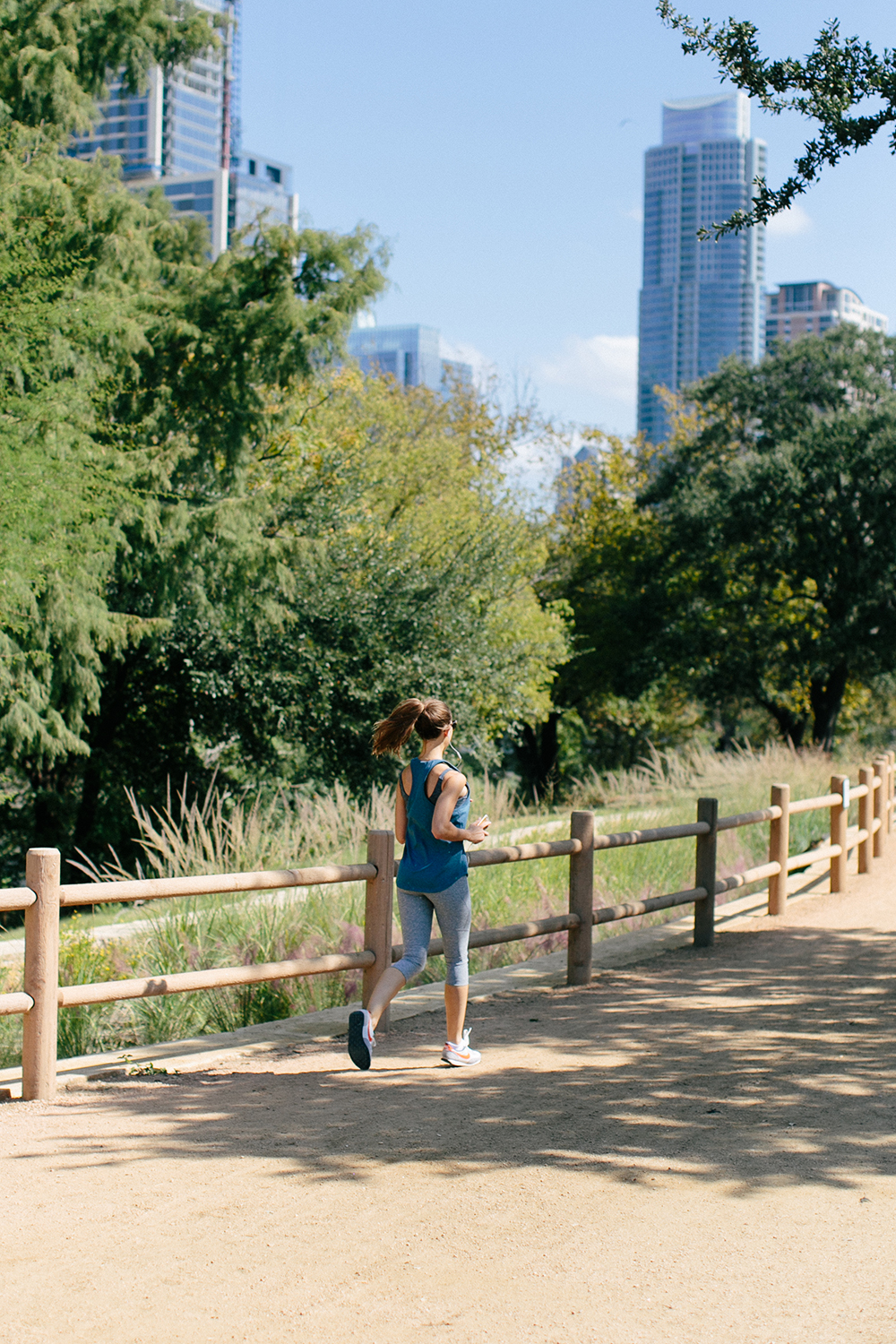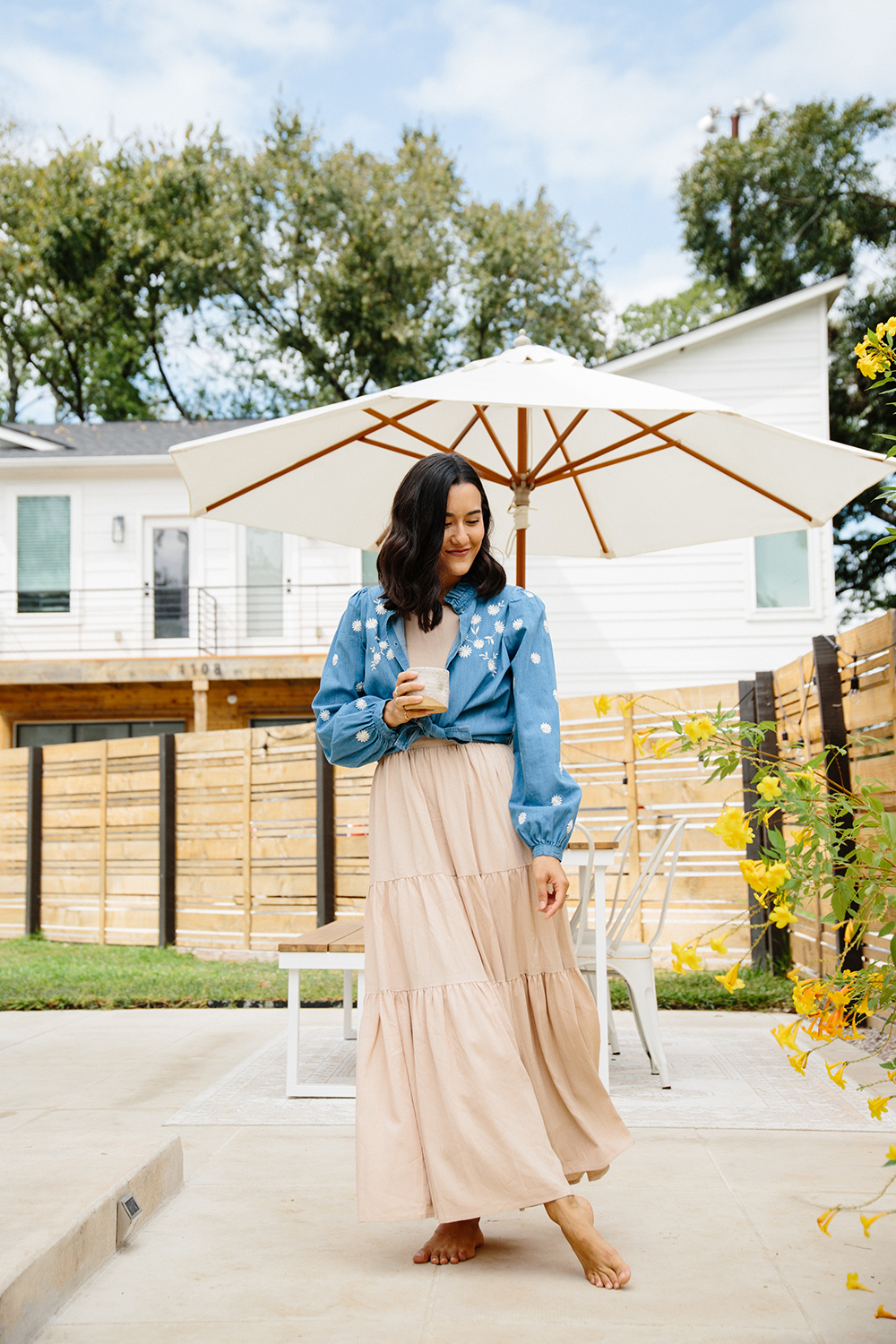While picking up dinner at a local restaurant in Austin the other day, I realized I’d forgotten my mask. Unsure of the restaurant’s policy, I opened the door a tiny bit and asked if they had a disposable mask, to which one of the employees responded, “No worries! You’re all good! No mask required!” I had a visceral flashback to an altercation I had months prior–at the same restaurant–where a woman accosted me because she felt I was standing too close to her. Utter confusion around seemingly overnight changes in policy is one of the many reasons why so many of us are experiencing pandemic fatigue.
An extroverted introvert and social butterfly at heart, my social reorientation has looked like flashes of strange, nostalgic experiences (see: restaurant interaction), blissful human interaction… and… complete fatigue.
It’s a combination of a sudden surge of events and bearing the weight of solidarity. I can feel our shared anxiety as we reemerge into the world. And truth be told, I kind of miss my little, intimate pod.
The far western world, notably Canada and the States, have the privilege of referring to the pandemic in the past tense thanks to widespread vaccinations. Only, we haven’t experienced just one pandemic but two: an intersection between COVID-19 and social isolation.
As we start congregating again, we must take delicate care with ourselves and one another. After all, despite our proverbial solitude, we’ve gone through the entire past 18 months together.
I’ve put together my thoughts and research on pandemic fatigue, social anxiety, and what to do about it. I’d love to hear how you’ve navigated re-entry in the comments below.
*Note* The below information applies to the US. I am keenly aware that equitable global access to vaccines, among other safety practices, remains a desperate need.

Understanding Pandemic Fatigue
If you are feeling exhausted or burnt out then you are not alone. We have all reached the end of our rope working hard to grapple with the repercussions of a pandemic. Our experiences have run the gamut: losing loved ones or jobs, missing out on once-in-a-lifetime experiences like weddings and graduations; getting cut off from favorite hobbies and time with loved ones, or even just the act of covering half of our faces daily.
As we re-enter the world, pandemic fatigue looms. Paul Nestadt, MD–assistant professor in the department of psychiatry and behavioral sciences at Johns Hopkins University School of Medicine in Baltimore–explains that exhaustion has the unfortunate ability to lower resilience which in turn elevates feelings of dread. Ironically, our exhaustion and ability to bounce back are lowered, thus we struggle to cope with our negative feelings. That spirals into more anxiety and more fatigue… aka chronic stress.
Now pile on this sudden re-emergence, an increase of gatherings, the drop of COVID protocol and precautions, and boom: pure overwhelm. Lynette Luckers, interim department head of counseling at Community College of Philadelphia says there’s a difference between feeling tired and feeling exhausted. She says,
“Tired is a state, but exhaustion is a trait. Together they create this endless loop of fatigue.”
Resting and Rejuvenating On Your Own Time
Sleep is (basically) everything
I have been told time and again that sleep is the number one cure to just about everything (also, water). We tend to overcomplicate health leading to paralysis.
But some of the best practices are extremely simple.
Behavioral sleep medicine provider Lisa Medalie, PsyD, and the creator of DrLullaby, says, “Optimizing control over stress will support sleep optimization.” She suggests 7-8 hours of sleep and intentional habits before bedtime to ensure a healthy night of sleep.
Don’t underestimate the power of therapy
Though we are re-entering society and spending more time with people than we have in months, many of us still have feelings of loneliness. When you bottle up emotions, opinions, and concerns–no matter how many people surround you–a sense of isolation is undeniable.
Dr. Sandro Galea, dean of the School of Public Health at Boston University, explains, “The definition of a trauma is an event that threatens people’s sense of safety and stability, which this pandemic is.” It is so important to openly talk about things we are struggling with.
Healthy discussion leads to deeper connection and security. And humans are organically resilient to traumatic events once the trauma is resolved.

Just Get Outside
I was recently asked, “What is bringing you joy right now?” I immediately thought of my husband and a Sunday we had spent together with our dogs. We essentially park hopped. We hiked a beautiful trail before sunset at Barton Springs, and I lay under a mimosa tree while he swam—it was pure bliss.
Extravagant plans aren’t necessary and you don’t have to go on a road trip to find nature—it is all around you. And when you immerse yourself in it, it is hard to deny the beauty all around us all the time.
Manage your expectations
This is incredibly important for high achievers (me talking to me).
While many of us accomplished pretty incredible feats during quarantine, we also struggled to tackle to-do lists… while reading stories about people like Edvard Munch, who painted incredible self-portraits of his physical state after contracting the Spanish Flu (or was that just me?).
While it’s important to stay active, get things done, and take care of yourself, it’s equally important to check out.
You will find that some of the best days of your life happened because you set out to do absolutely nothing.
Set three daily goals
This simple framework around goal-setting has led to incredible personal growth. There is nothing more fulfilling than doing what you set your mind to. Consider setting three simple, daily goals that ultimately lead to your one big intention, whether it’s to feel more at ease, to connect with your loved ones, or to complete a work project.
Benjamin Franklin also kept it simple, asking himself one question at the beginning and end of the day: ‘What good shall I do this day?’ in the morning and ‘What good have I done today?’ before bed.

Navigating Group Settings and Alleviating Social Anxiety in the “Real World”
I have always had a very high threshold for emotional management. I can pile on an entire ton of human interaction and output to the point where I will completely diminish my energy. Thus, my social anxiety doesn’t look like awkwardness or discomfort. When I feel anxious, it is due to an outpouring of empathy, space-giving, and self-sacrifice. Add pandemic fatigue and a post-vaccination lifestyle in the mix and imagine what that looks like (total overwhelm).
I’ve made the mistake of allowing myself to reach that threshold so many times that I’ve finally learned how to temper my social capabilities. My therapist taught me the tactic last summer. She told me to ask myself two questions:
-
Do I need to do it? Why?
-
Do I want to do it? Why?
My answers would determine my decision. It has since become one of the best measures I’ve developed for social boundaries.
We are all built differently yet we commonly yearn for robust social lives and a healthy sense of togetherness. After the most isolating experience of our lives, entering back into a new normal comes with a need for collective care. Priya Parker puts it perfectly,
“In conflict resolution, there’s a term we use to name the moment when a group has been through a transformative experience and needs to prepare to go back out into the world: re-entry. Re-entry is the process of helping a group reflect on an experience, make meaning of it, and integrate it so they can choose what to bring with them to shape their future worlds.”
So, I’d love to know. What are you bringing with you to shape the future of our world?






